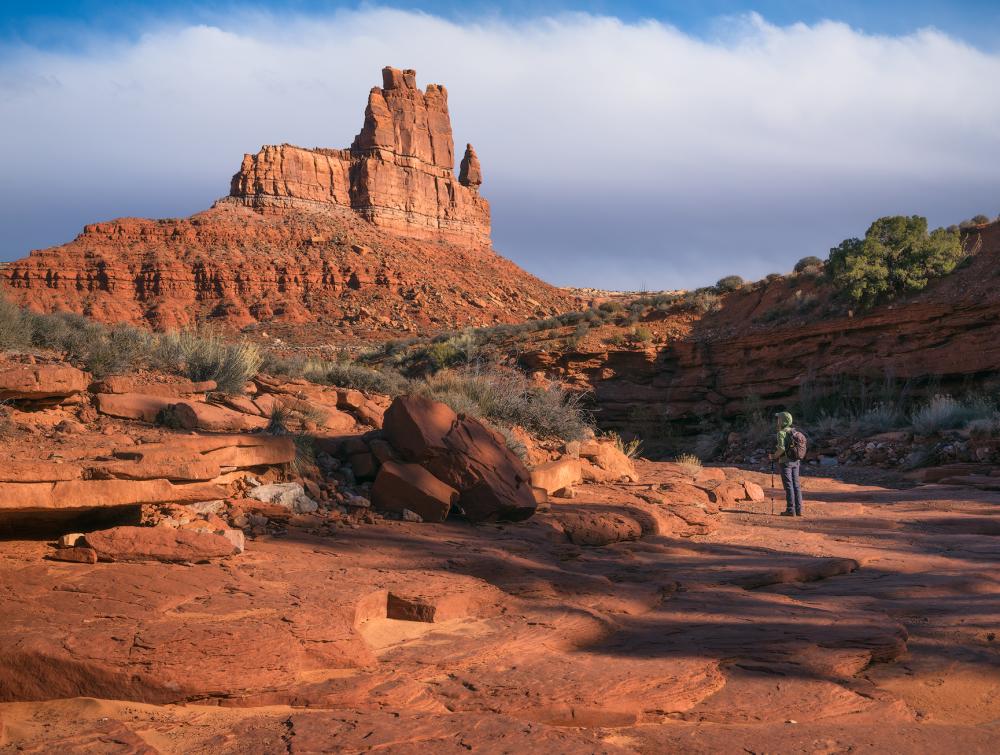Starting today, companies can mine in former Bears Ears and Grand Staircase-Escalante

Bears Ears National Monument, Utah
Mason Cummings, TWS
On the morning of Feb. 2, 2018, the Trump administration's all-fronts war on public lands entered a new and distressing phase.
That's when the infamous cuts to Bears Ears and Grand Staircase-Escalante national monuments mining and drilling protections took effect, clearing the way for companies to start chasing uranium and coal claims, respectively, on tracts formerly included therein.
The Wilderness Society and other groups have filed lawsuits to challenge Trump's actions, but the intense and precedent-setting legal battle ahead will take a while to play out. We expect to win, but in the meantime, Bears Ears' and Grand Staircase-Escalante's priceless natural landmarks and Native American cultural sites will be extremely vulnerable. Starting today, these threats looms larger than ever.
We are monitoring for mining and other activity and will swiftly act to protect these important and sensitive monument lands from any harm.
Uranium, oil and coal mining extraction motivated monument attacks all along
Defenders of Trump's actions have claimed there is no danger of mining on lands once part of Bears Ears because the price of uranium is too low to expedite development, but that is not a permanent state (and lest we forget, it was a uranium company that lobbied the Trump administration to exclude potentially ore-rich areas from the new Bears Ears boundaries). Similarly, while the area formerly protected as Bears Ears is not considered a high-potential spot for oil and gas drilling at the moment, that could easily change with market fluctuations and the development of new technologies.
Meanwhile, Trump's contracted borders for Grand Staircase-Escalante carefully tiptoe around coal deposits, opening the door for coal mining operations on former monument lands. That could mean thousands of acres dug up and stripped, waterways polluted with soil and contaminants and wildlife driven away by dust and noise pollution.
This unbalanced approach is especially worrisome in the current pro-fossil fuel political climate, with oil, gas, coal and other interests flexing their muscles like never before in the White House and Congress.
We are committed to working with partners to monitor the most imminent threats on the ground at Bears Ears and Grand Staircase-Escalante, as well as preparing a response to further monument attacks by the administration and organizing opposition to anti-monument legislation brewing in the House and Senate.
Acres for a few dollars apiece under 19th century mining law
Hardrock mining claims (metals, uranium and other ores) can be staked under the General Mining Law of 1872, which was born in an age of seemingly inexhaustible natural resources and wildcatting mineral prospectors that is frankly tough for the average 21st century American to grasp (as at least one observer has noted, it would likely surprise the authors of that law to learn it is still in use so many years later).
Under the Mining Law, prospectors are given unusually broad license to choose where they search for and develop mineral deposits on public lands (all deposits are "free and open to exploration and purchase," though subsequent laws, including various conservation measures, withdrew some lands from the statutory free-fire zone). Once they discover something they want, prospectors can buy up the land around it for only a few dollars an acre.
In its long legislative life, the statute has left western landscapes scarred by craters and abandoned mines, as well as occasionally sticking taxpayers with the bill for cleaning up after old mining operations go bust. The law prioritizes industrial conquest over environmental and health concerns, and has not been reformed adequately to account for the fact that it now applies to large-scale mining operations rather than the "pick and shovel miners" of the 19th century.
The dynamic of extractive interests operating with impunity but not paying their fair share to the American people has a long and fraught history. For example, coal companies mining on Colorado public lands bid an average of 23 cents per ton to do so, paying far less in royalties to taxpayers than is mandated by law while producing a dirty, greenhouse gas-heavy fuel whose negative consequences we understand better every day.
Similarly, oil and gas companies are able to lease federal public lands for a few bucks an acre, and even "squat" on them rent-free—sometimes indefinitely, thanks to a loophole that allows them to get a time-out on their lease terms. The vast majority of our shared public lands are open to oil and gas leasing, including places that ought to be managed for recreation, wildlife habitat or cultural artifacts.
